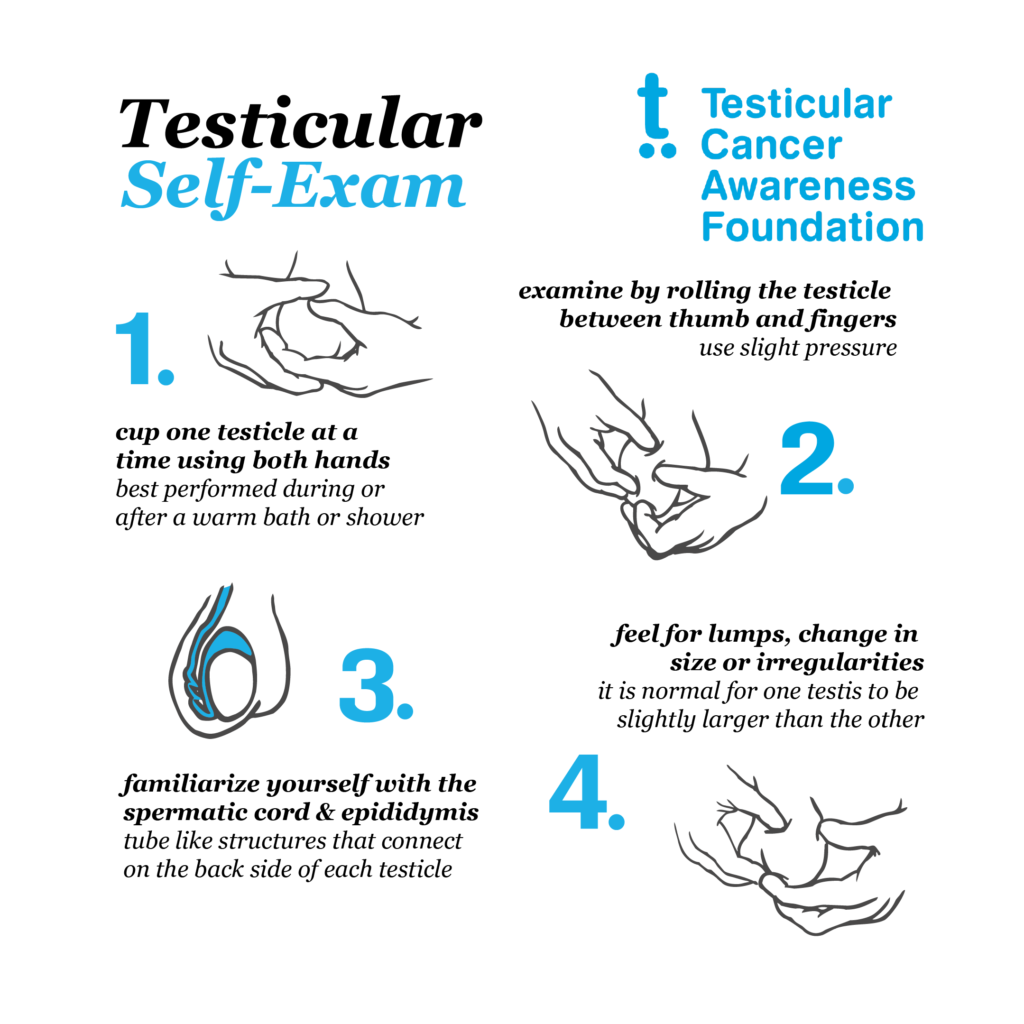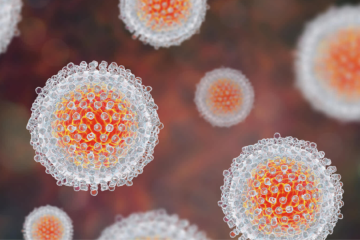
When it comes to maintaining our health, it’s all too easy to put certain aspects of self-care on the back burner. Perhaps one of the most commonly overlooked areas is men’s testicular health. Testicular self-exams may not be a topic you hear discussed often, but they are a crucial part of preventive healthcare that every man should incorporate into his routine. In this blog, we will explore the reasons why you should perform a monthly testicle exam and how this simple practice can be a lifesaver. By the end of this article, you’ll understand that taking a few minutes each month for this self-exam is not just an option but a responsibility to yourself and your well-being. So, let’s delve into why and how you should make monthly testicular exams a part of your healthcare regimen.
Why Testicular Self-Exams Matter
Testicular self-exams are not merely a routine exercise in personal hygiene or self-care; they are a fundamental aspect of men’s health that can make a significant difference in early detection, treatment, and overall well-being. Here’s why these exams matter:
Early Detection of Testicular Cancer
Testicular cancer is the most common cancer among young men aged 15 to 44. However, the prognosis for testicular cancer is generally excellent when detected early. By performing monthly testicular self-exams, you become attuned to your body and can identify any unusual changes promptly. This early detection is critical in ensuring that any potential issues are addressed before they can progress to more advanced stages.
Highly Treatable When Caught Early
Testicular cancer has one of the highest cure rates among all cancers, with a five-year survival rate exceeding 95%. However, this favourable outcome is directly correlated with early diagnosis and prompt treatment. The moment you detect a lump or any irregularity during a self-exam, you can initiate the process of seeking medical advice and treatment options, increasing your chances of a full recovery.
Empowerment and Active Engagement
Your health is ultimately your responsibility. By performing monthly testicular self-exams, you take an active role in monitoring and safeguarding your well-being. This sense of empowerment can extend to other areas of your health and motivate you to adopt a more comprehensive approach to self-care.
Reduction of Anxiety and Stress
Ignorance or uncertainty about the health of your testicles can lead to anxiety and stress. Regular self-exams provide a sense of control and awareness, helping to reduce these negative emotions. Knowing that you are actively monitoring your testicular health can bring peace of mind.
Minimization of Medical Costs
Delaying or neglecting self-exams can lead to later-stage diagnoses, which often require more extensive medical treatments. By identifying issues early on, you not only improve your prognosis but also reduce the financial burden associated with advanced medical interventions.
Enhanced Doctor-Patient Communication
Performing testicular self-exams gives you valuable information to share with your healthcare provider during routine check-ups. When you can describe any changes or concerns accurately, your doctor can provide a more targeted evaluation and recommendations, ensuring your health is comprehensively addressed.
Awareness and Education
Raising awareness about the importance of testicular self-exams contributes to a culture of men’s health. By incorporating this practice into your routine, you set an example for others, encouraging them to do the same. Increased awareness can lead to more timely diagnoses and better health outcomes for men everywhere.
This simple, monthly routine is a small investment in your well-being that can yield tremendous dividends in the long run. So, don’t delay – start performing regular testicular self-exams today and make them a lifelong habit. Your health is worth it.
How to Perform a Monthly Testicular Self-Exam
Performing a monthly testicular self-exam is a straightforward process, but it’s essential to do it correctly to effectively monitor your testicular health. Follow these step-by-step instructions:
Step 1: Find a Comfortable Location
Choose a quiet and private location where you can perform the self-exam without interruptions. Many men find the shower to be an ideal place, as warm water can help relax the scrotal skin, making it easier to examine the testicles.
Step 2: Gather Supplies
You don’t need any special equipment for a testicular self-exam, but having a mirror and a towel nearby can be helpful.
Step 3: Examine Your Scrotum Visually
Start by standing in front of a mirror and inspecting your scrotum. Pay attention to any visible abnormalities or changes in the skin, such as redness, swelling, or dimpling. It’s normal for one testicle to hang slightly lower than the other or for one to be larger, but take note of any significant differences.
Step 4: Support One Testicle
Hold your penis out of the way and support one testicle at a time with your fingers. You can use your thumb and fingers from both hands to gently cradle the testicle.
Step 5: Examine Each Testicle Individually
Once you’ve supported one testicle, use your free hand to carefully examine it. Here’s what you should be looking for:
- Size and Shape: Testicles naturally vary in size, but any sudden changes in size or shape should be noted.
- Texture: Testicles should feel smooth and slightly firm, like a hard-boiled egg. Don’t be alarmed by the epididymis, a cord-like structure on the back of the testicle; this is normal.
- Lumps or Bumps: Gently roll the testicle between your fingers, feeling for any lumps, bumps, or irregularities. These could be hard or soft.
- Pain or Discomfort: Note any pain or discomfort during the examination. A mild, temporary ache is normal, but persistent pain should be discussed with a healthcare provider.
Step 6: Repeat for the Other Testicle
After thoroughly examining one testicle, move on to the other, following the same steps. It’s crucial to evaluate both testicles individually, as any differences between them may indicate a problem.
Step 7: Check the Epididymis
While examining each testicle, also take a moment to feel the epididymis. It’s a coiled tube located behind the testicle and is part of the normal anatomy. You should be able to distinguish it from any irregularities on the testicle itself.
Step 8: Note Any Changes or Concerns
If you detect any lumps, bumps, changes in size or any other concerns during your self-exam, make a note of them. Documenting your observations can be helpful for tracking changes over time and discussing them with a healthcare provider.
Step 9: Consult a Healthcare Provider
If you find any abnormalities or experience persistent pain or discomfort during the self-exam, it’s crucial to consult a healthcare provider promptly. Remember that many testicular issues are not cancerous, but they should still be evaluated by a medical professional to determine the cause and appropriate treatment.
Step 10: Maintain Regularity
Make a habit of performing testicular self-exams monthly. You can choose a specific date each month to help you remember. Consistency is key to early detection and maintaining your testicular health.
By following these steps and staying vigilant, you can play an active role in safeguarding your well-being and ensuring early intervention if needed. Your health is worth the effort, so make testicular self-exams a regular part of your healthcare routine.
Common Concerns and When to Seek Medical Attention
While it’s normal to have some variations in testicle size and shape, certain changes should prompt immediate consultation with a healthcare provider. These include:
Lumps or Hard Masses: If you discover a lump or hard mass on your testicle, it’s essential to have it examined promptly. While not all lumps are cancerous, they could be indicative of various conditions that require medical attention.
Pain or Discomfort: Persistent pain or discomfort in the testicles, groin, or lower abdomen should never be ignored. It may be a sign of an underlying issue that needs to be addressed.
Changes in Size or Texture: If you notice any unusual changes in the size or texture of your testicles, seek medical advice. This could include swelling, shrinkage, or alterations in skin texture.
Fluid Buildup: Accumulation of fluid in the scrotum, known as a hydrocele, can cause discomfort and warrant medical evaluation.
Conclusion
Your testicles play a crucial role in your overall health and fertility, making their well-being paramount. The few minutes you invest each month in self-examination can make all the difference when it comes to detecting issues like testicular cancer or other concerns.
Remember that you are your own best advocate in the realm of men’s health. Your commitment to regular self-exams demonstrates your dedication to living a healthy life. Additionally, your actions can inspire those around you to prioritize their health, contributing to a culture of well-being and early detection.
So, embrace the responsibility, take charge of your health, and encourage others to do the same. Make the monthly testicular self-exam a non-negotiable part of your healthcare routine. By doing so, you’re not only protecting yourself but also spreading awareness and saving lives—one self-exam at a time.
Dr. Sumit Sharma is an experienced urologist, andrologist, and kidney transplant surgeon with over 20 years of clinical experience. He is the founder of the Department of Urology at multiple hospitals in Gurgaon and has established successful kidney transplant programs across the city.


